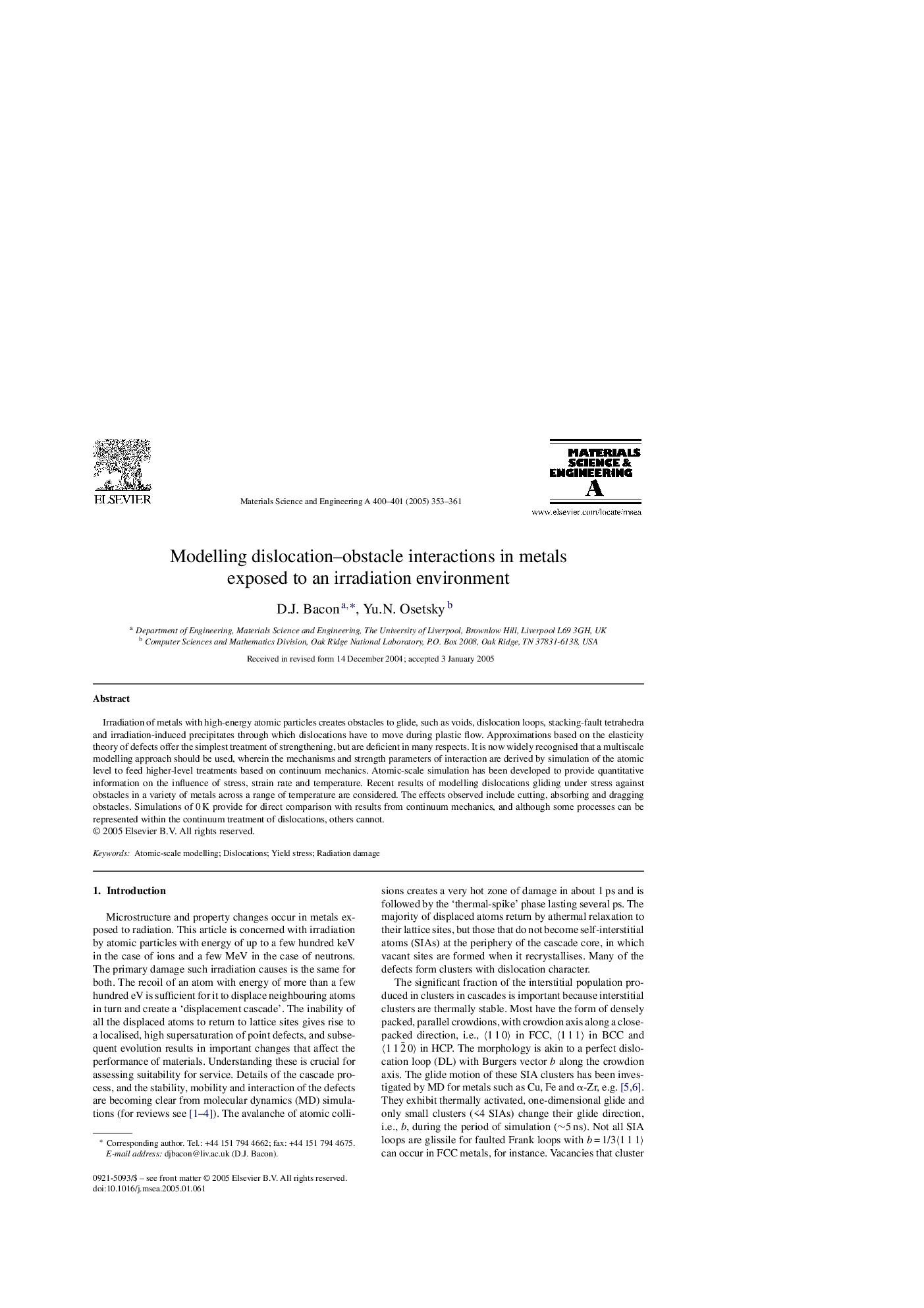| Article ID | Journal | Published Year | Pages | File Type |
|---|---|---|---|---|
| 9796137 | Materials Science and Engineering: A | 2005 | 9 Pages |
Abstract
Irradiation of metals with high-energy atomic particles creates obstacles to glide, such as voids, dislocation loops, stacking-fault tetrahedra and irradiation-induced precipitates through which dislocations have to move during plastic flow. Approximations based on the elasticity theory of defects offer the simplest treatment of strengthening, but are deficient in many respects. It is now widely recognised that a multiscale modelling approach should be used, wherein the mechanisms and strength parameters of interaction are derived by simulation of the atomic level to feed higher-level treatments based on continuum mechanics. Atomic-scale simulation has been developed to provide quantitative information on the influence of stress, strain rate and temperature. Recent results of modelling dislocations gliding under stress against obstacles in a variety of metals across a range of temperature are considered. The effects observed include cutting, absorbing and dragging obstacles. Simulations of 0Â K provide for direct comparison with results from continuum mechanics, and although some processes can be represented within the continuum treatment of dislocations, others cannot.
Related Topics
Physical Sciences and Engineering
Materials Science
Materials Science (General)
Authors
D.J. Bacon, Yu.N. Osetsky,
